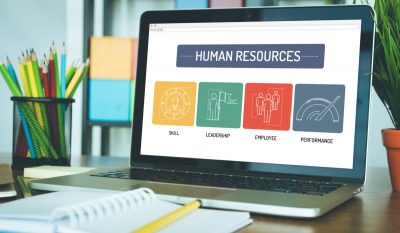Highlights:
- Workplace leaders’ perspectives and learn how to implement the future of work within the business.
- The culture of hybrid work became the new standard; as a result, businesses need to develop technology compatible with hybrid work methods and capable of producing a virtual event within a hybrid reality.
- As corporate management implements employee return-to-office policies, many businesses may be exposed to risk.
Enterprise Connect gives a glimpse of the future of work
Designing workspaces for the future of work continues to be one of the most significant difficulties businesses face today. The problem that impacts the technology used in businesses, how and where workers work, and the company’s culture. In this blog, we will study the workplace leaders’ perspectives and learn how to implement the future of work within the business.
As we move toward the future of work, below are a few takeaways that indicate where we may be headed.
Workplaces will take a pause, then strategize for the future
The newest goods, services, and features on how they fit into the hybrid office were provided by vendors in communications and collaboration; nonetheless, few people expressed the idea that hybrid work is both a contemporary and a workplace difficulty with no apparent or straightforward answer.
During the pandemic, the culture of hybrid work became the new standard. As a result, businesses had to develop technology compatible with hybrid work methods and capable of producing a virtual event within a hybrid reality.
Addressing the Great Resignation and D and amp;I in the same breath
Even amid the Great Resignation, it is essential to make strides toward increasing diversity and inclusion (DNI) in the workplace. When recruiting a varied pool of talent, you need to bear in mind two essential facets of HR: job descriptions and benefits.
HR experts and recruiters need to conduct comprehensive analysis of the hiring process. Review current job descriptions and rework them so that they are more appealing to applicants who come from a variety of backgrounds. The perks and advantages that HR professionals provide to employees should be subjected to a thorough review.
Nevertheless, because the Great Resignation is still in full swing, investing in DNI can be a method for your organization to future-proof itself in terms of personnel and recruiting.
Artificial Intelligence is coming to speech technology – Now
Chatbots, virtual assistants, and conversational Artificial Intelligence (AI) are all on the horizon for businesses as they ride the wave of technological progress. When it comes to technologies that recognize speech, AI delivers a wide variety of new things; it is not going away as it should and will not.
The enterprise speech tech ecosystem is growing. When it comes to systems that recognize speech, AI brings a lot to the table.
Where speech technology lives in the enterprise
Customer service, the contact center, and customer experience have dominated the majority of corporate use cases. Beyond customer-centric interactions, the top five use cases for voice technology include web-conferencing transcription, customer experience and amp; analytics, subtitling and amp; closed captioning, education, academic and amp; research transcription, and medical transcription.
Consumer electronics, compliance, legal transcribing, and media monitoring, to mention a few, are examples of use cases with the most prominent commercial effect. With an emphasis on collaboration and productivity, you should prioritize four leading corporate apps: voice-to-text applications for meetings, virtual assistants, automated speech recognition for conversational analytics, and real-time translation.
Where AI and amp; speech tech is heading: Beyond collaboration
Augmented reality is on the horizon, even though our working days begin and conclude in the actual world.
Because it’s another application with a use case for these technologies, Meta has transitioned to a completely virtual form within the context of workplace collaboration. The fact that the avatars are shaped like puppets and have their bodies severed at the waist gives the impression that this is a game. The real world doesn’t even come close to where Meta lives.
The following generation of computers will be purpose-built to accommodate things like horsepower, and whatever the shape that the metaverse ultimately takes, “speech will be key to adoption.”
AI adoption: cautionary notes to keep in mind
The AI might go in either the correct or the wrong way. Because innovation attracts both good and evil actors, businesses would be wise to concentrate their efforts on detecting deep fakes rather than confirming what is authentic and genuine. While the technology itself is unbiased, the inherent bias of AI makes things more difficult. AI is now at the forefront of all sorts of technology, including workplace use cases like collaboration.
More ways to connect and amp; fewer coding demands – The future of customer experience
Hybrid Work
The word or phrase that stands out the most would be “hybrid work.” Numerous leading firms, such as Cisco, Microsoft, and Zoom, are introducing new hybrid workforce and work environments, highlighting the need to democratize meetings to deliver similar experiences for in-office and remote participants. Listed below are some strategies employed by companies:
- Highlighted the ability for remote participants to watch each meeting participant individually, even if they are seated together in a conference room.
- The company demonstrated the front row screen configuration, fostering a stronger connection with attendees.
- AI-based advanced meeting insights meeting summaries, subjects, video highlight reels, and keywords to assist individuals in catching up on missed sessions.
All things Customer Experience (CX) related
While unified communications (UC) and unified communications as a service (UCaaS) are still robust, expanding markets, customer engagement and customer experience (CX) are where the real excitement and innovation are occurring.
Google has been a significant player in contact centers and Customer Experience (CX). Numerous Contact Center as a Service (CCaaS) providers utilize Google’s AI capabilities behind the scenes. Despite competing with its partners, Google may become a big contact center player with its end-to-end CCaaS service. This will undoubtedly create opportunities for smaller competitors that do not offer rival products.
The emphasis on CX leads us to the next trending topic: UCaaS and CCaaS integration. While CX and contact center-related topics were trending, the merging of UCaaS and CCaaS elevated the discourse to an entirely new level.
Is your office ready for return-to-office?
As corporate management implements employee return-to-office policies, many businesses may be exposed to risk. The danger is that employees will refuse to comply, deciding instead to join the Great Resignation and relocate to a company with more accommodating hybrid-work rules. However, there is an additional danger that even those who return to the office will find the experience disappointing and unproductive, judge the experiment a failure, and revert to remote-only employment, reluctance or refusing to return.
The employee experience is a possible issue that might increase the danger of return-to-office plans, and recent comments indicate that the challenge should not be underestimated.













